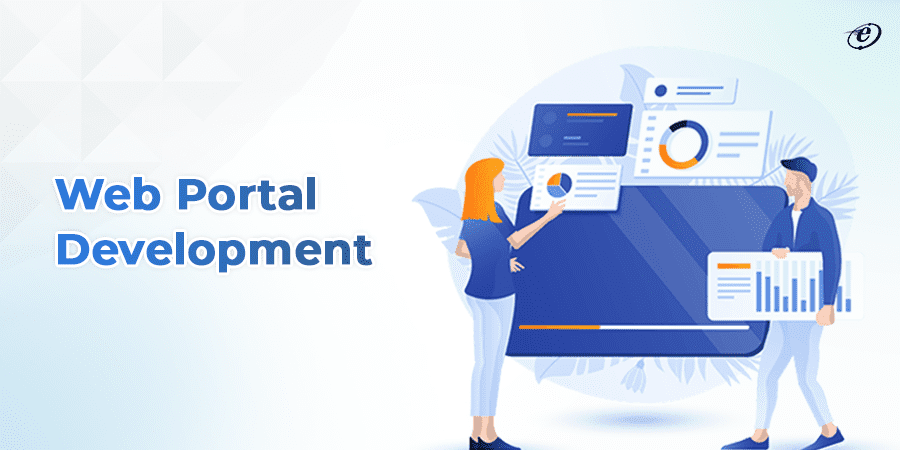In today’s digital era, dashboards have become the control centers of modern web portals. Whether you’re building a business intelligence platform, an HR portal, or a client-facing interface, a user-friendly dashboard is crucial for driving engagement, efficiency, and decision-making.
Designing a dashboard that is both functional and user-centric can be a game changer. In this article, we explore how to create intuitive, responsive, and insightful dashboards that deliver real value to end-users. We’ll also highlight how a professional web portal development company can help you achieve this and control your web portal development cost.
What Is a Dashboard in Web Portal Development?
A dashboard is a visual interface that displays key metrics, reports, and user interactions within a web portal. It acts as a central hub where users can access important information at a glance and perform actions without navigating through multiple sections.
Dashboards vary widely depending on the portal type—admin dashboards, customer dashboards, employee dashboards, and analytics dashboards all serve different roles. That’s why it’s important to take a tailored approach during web portal development.
Why User-Friendly Dashboards Matter
Here’s why dashboard design deserves special attention:
-
Improved Usability: Users can access information quickly and perform tasks without friction.
-
Enhanced Productivity: A clean, intuitive interface reduces time spent navigating the portal.
-
Data-Driven Decisions: Visual elements like charts and graphs help users interpret data easily.
-
Higher Retention: A well-designed dashboard keeps users coming back due to a better experience.
If you’re investing in Web Portal Development Services, ensuring the dashboard design is user-friendly should be a top priority.
Principles of User-Friendly Dashboard Design
To design a user-centric dashboard, follow these core principles:
1. Understand the User’s Needs
The first step in any dashboard project is to understand who your users are and what they need. For example:
-
A sales manager may need real-time metrics, charts, and KPIs.
-
A customer service rep may need quick access to support tickets and user history.
This is where a skilled web portal development company adds value—by conducting discovery workshops to capture user requirements and tailoring the dashboard accordingly.
2. Keep It Simple and Focused
Dashboards should never be overloaded with information. A cluttered layout creates confusion and defeats the purpose.
Tips:
-
Limit the number of widgets visible at once.
-
Use whitespace effectively.
-
Group related information logically.
Start with a “less is more” approach and let users customize as needed.
3. Use Visual Hierarchy
Not all data on a dashboard is equally important. Use visual hierarchy to guide user attention:
-
Position key metrics at the top.
-
Use bold fonts for critical KPIs.
-
Apply contrasting colors to draw attention.
This design strategy ensures that users can quickly identify what matters most without feeling overwhelmed.
4. Incorporate Data Visualization
Dashboards are data-rich, so using charts, graphs, and gauges makes them more digestible.
Best practices:
-
Use line charts for trends, bar charts for comparisons, and pie charts for proportions.
-
Avoid over-styling; clarity is key.
-
Add hover-over tooltips for deeper insight.
Most Web Portal Development Services today include data visualization tools like Chart.js, D3.js, or embedded BI dashboards.
5. Ensure Mobile Responsiveness
Your users are not just on desktops. Mobile-compatible dashboards are essential for today’s workforce, especially in field services, logistics, and healthcare sectors.
A mobile-responsive dashboard should:
-
Adapt layouts automatically
-
Offer swipe-friendly navigation
-
Load quickly on 3G/4G/5G networks
Responsive design is typically a core deliverable in modern web portal development.
Enhancing Dashboard Usability: Advanced Features
To take your dashboard to the next level, consider these advanced features:
1. Personalization
Let users customize their dashboard views based on what matters to them. For example:
-
Drag-and-drop widgets
-
Save custom reports
-
Set notification preferences
This improves usability and boosts user satisfaction.
2. Real-Time Updates
In many industries, real-time data is critical. Implementing real-time refresh using WebSockets or polling can ensure users always see the latest information—whether it’s financial metrics, delivery status, or live user engagement.
3. Role-Based Access Control
Not every user should see every metric. Incorporating role-based access ensures users only see data relevant to them, reducing confusion and enhancing security.
A seasoned web portal development company can implement granular permissions based on roles or teams.
Controlling Web Portal Development Cost
While designing an advanced dashboard adds value, it’s important to manage costs wisely. Here’s how to keep web portal development cost under control:
-
Start with an MVP: Begin with a basic dashboard and expand based on user feedback.
-
Use Pre-built UI Kits: Leverage open-source dashboard templates to reduce design and development time.
-
Choose Scalable Technologies: Use a flexible tech stack that allows easy updates and integrations.
-
Hire the Right Partner: An experienced web portal development company will help you avoid costly mistakes and scope creep.
Remember, the cost of building a robust and user-friendly dashboard varies based on complexity, features, and technology used. A basic dashboard may cost $5,000–$10,000, while complex, real-time dashboards with analytics can exceed $25,000.
Why Work with a Professional Web Portal Development Company?
Designing a dashboard that truly meets user needs requires strategic thinking, design expertise, and backend integration skills. A professional web portal development company can:
-
Conduct user research and create personas
-
Design intuitive UI/UX layouts
-
Build secure, scalable, and responsive dashboards
-
Provide ongoing support and enhancements
Whether you need internal dashboards for your team or customer-facing portals, choosing the right Web Portal Development Services can ensure long-term success.
Conclusion
Dashboards are the heart of any web portal—they provide users with insights, access to tools, and the ability to take action. A well-designed, user-friendly dashboard is not just a design goal but a strategic asset for business success.
By focusing on simplicity, usability, mobile responsiveness, and data visualization, you can craft dashboards that truly empower users. And by partnering with a trusted web portal development company, you can optimize both functionality and web portal development cost, ensuring your investment delivers maximum value.


